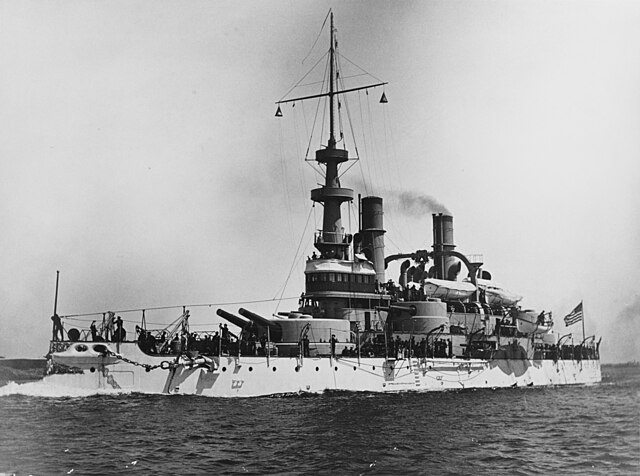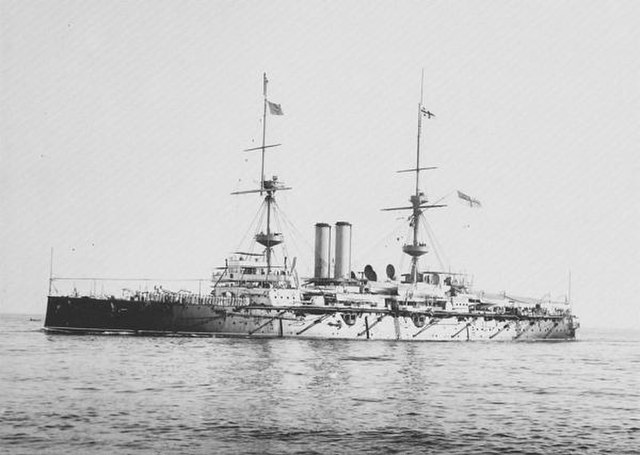USS Iowa was a pre-dreadnought battleship built for the United States Navy in the mid-1890s. The ship was a marked improvement over the previous Indiana-class battleships, correcting many of the defects in the design of those vessels. Among the most important improvements were significantly better seaworthiness owing to her greater freeboard and a more efficient arrangement of the armament. Iowa was designed to operate on the high seas, which had been the impetus to increase the freeboard. She was armed with a battery of four 12-inch (305 mm) guns in two twin-gun turrets, supported by a secondary battery of eight 8-inch (203 mm) guns.
Iowa early in her career
The low-freeboard Indiana-class design
Top and profile illustration of the Iowa design
Iowa's forward main battery turret; one of her secondary turrets is visible at right
Pre-dreadnought battleship
Pre-dreadnought battleships were sea-going battleships built from the mid- to late- 1880s to the early 1900s. Their designs were conceived before the appearance of HMS Dreadnought in 1906 and their classification as "pre-dreadnought" is retrospectively applied. In their day, they were simply known as "battleships" or else more rank-specific terms such as "first-class battleship" and so forth. The pre-dreadnought battleships were the pre-eminent warships of their time and replaced the ironclad battleships of the 1870s and 1880s.
HMS Royal Sovereign (1891) was the first pre-dreadnought battleship of the Royal Navy.
HMS Ocean was typical of pre-dreadnought battleships
HMS Dreadnought shows the low freeboard typical for early ironclad turret-ships. This ship, launched in 1875, should not be confused with her famous successor, launched in 1906, marking the end of the pre-dreadnought era.
HMS Ramillies was the fourth ship of the influential Royal Sovereign class. The diagonal tubes are spars for torpedo nets.








